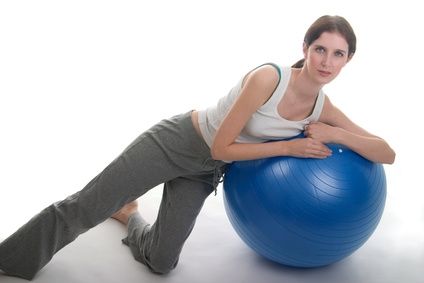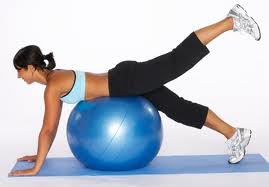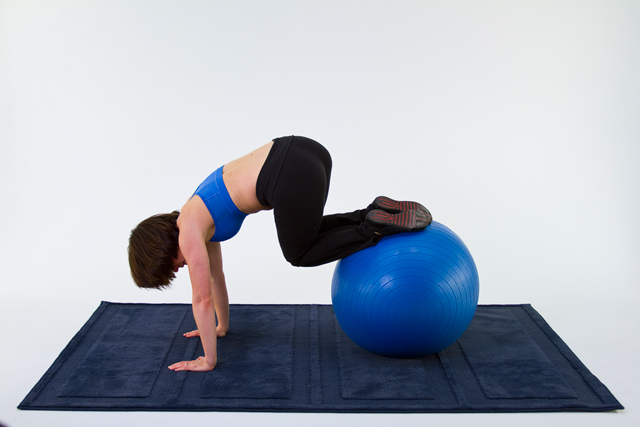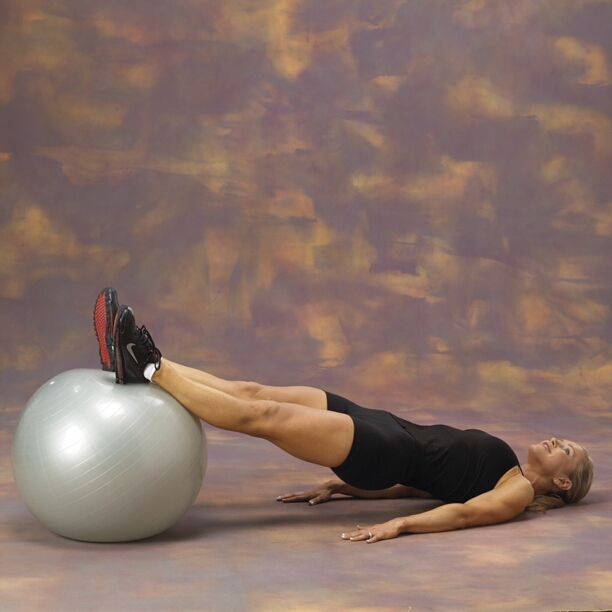
Arthritis patients have to normally deal with acute pain of the joints during any type of movement. This puts off the affected individuals from doing any workouts. This is because any type of work out aggravates their pain till it becomes unbearable.
Stability balls are primarily made of elastic rubber and can be inflated to around 22 to 34 inches in diameter. They are extremely used in alleviating joint stiffness and immobility of certain muscles. They mainly help in arthritis due to their ability to remove the stiffness of various joints. These stability balls also greatly help in toning and strengthening the associated structures of the joint and toning up the muscles resulting in more free movement of the joints. This is where the exercise ball comes into the picture like a boon in disguise.
People with severe back pain can keep their spinal discs lubricated with the physio ball. This is achieved by increasing the blood flow around the disc and by causing the water to flow freely in and out of the spinal discs. To perform the ball exercises, one should get trained from a certified trainer who is an adept ball trainer. Depending on the severity of arthritis, different individuals are prescribed different regimes with the Swiss ball. There is a multitude of stability ball exercises that can help patients get lasting relief from pain due to weak joints and muscles.
Read through to know the top 9 stability ball exercises which will help you combat arthritis:
Pelvic isolation ball exercise
Sit in the center of the exercise ball with arms on your hips. Pulling your stomach muscles in, slowly do a pelvic tilt, and swing your hips a little towards the front. Return to your initial position and now move your hips slowly towards the back. Repeat this exercise nearly 10 times to get some effect. Your back pain will be considerably reduced in a matter of few weeks as your joints get healthier and stronger. You can do the pelvic tilt from side to side and then in circles. This exercise is very helpful to combat back pain and hip joint pain. The stiffness in these joints due to arthritis is reduced considerably giving you more flexibility and comfort.
The pelvic ball exercise is a great way to bring back your painful muscles and joints that are weakened due to a pregnancy or two. Even post menopausal, women suffer from an acute depletion of bone density giving rise to arthritis. The pelvic isolation ball exercise is a simple and tested way to come back to doing normal activities with minimum effort.
Spine rotation ball exercise
To do the spine rotation on the physio ball, sit on the stability ball with arms raised straight in the front. Keep the spine erect and move both the arms first to the right and then to the left. Ensure that you do not twist the spine at any point in time. It is easier to do this exercise with your elbows bent at the waist level. To improve upon the spine rotation exercise, move your head simultaneously in the opposite direction yet keeping the spine straight. This can be repeated 5 times on each side. The spine rotation exercise is great for the pelvic joint as well as the spine and the hips.
The spine rotation exercise needs a proper balancing of the body in the center of the ball so that the spine is rotated in just the right angle and you do not pull a string or two.
Mobility and stretching ball exercise
This exercise involves stretching out on the stability ball to improve your mobility. Sit on the Swiss ball with your feet stretched out as straight as possible with your arms to the side. Now, lean back gradually and roll the ball to the upper part of your back and raise your arms over your head. Try to stretch your knees and move the ball from the upper half of the back to the lower half in a swinging movement. You may not be able to master this easily and it is advisable to perform this exercise under the guidance of an able ball trainer. There are a number of various modifications of the ball stretch that you can choose from according to your area of pain.
Hip extensions
The hip extension ball exercise targets the gluteus muscle and three hamstring muscles that are mainly responsible for the extension movement of the hips. Place your feet on top of the stability ball and take a push up position. Gradually lift one leg as upwards as possible and remain in this position for at least 20 seconds. Now slowly come back to the neutral pose and repeat the same movement with the other leg. To enhance this exercise, you can wear ankle weights. Repeat on each leg at least five times. Care should be taken not to inadvertently twist any muscles by overdoing the extensions. Hip extensions are one of the most popular exercises for stiff backs and painful joints.
Dirty dog
The dirty dog is an exercise meant to strengthen the hip joint abductor muscles. Place your hands on the stability ball and bend on your knees beside the ball. Lean forward till your back is almost parallel to the ground. With one knee bent, lift the other leg slowly upwards and sideways till it is straight. Repeat this with the other leg. Ensure that you do not rotate the upper half of your body. The dirty dog ball exercise should be done at least ten times on each leg to allow improved circulation of blood in the leg and the hip region. It also helps in relieving the acute pain due to arthritis in the surrounding leg muscles. This exercise has derived its name due to the funny position that you assume while performing this exercise!
Isometric ball hip abduction
To get the best out of this exercise, place the stability ball next to a firm wall. Lie next to the wall with your shoulders at right angles to the body stretched sideways. Place yourself near the wall and press the stability ball into the wall with one foot and hold in this position for twenty seconds. Repeat with the other leg by turning to the other side. The isometric hip abduction helps strengthen the hip muscles that are responsible for the abduction movement of the hip joint. Similarly there is a ball exercise known as isometric ball adduction for the adduction muscles of the hip joint. You can repeat the same exercise by using both the legs simultaneously and rolling the ball back and forth from the wall. This will give immense flexibility in the hip joint muscles and relieve you considerably of arthritic pain.
Hamstring curl
Lie down flat on the floor keeping your heels on the stability ball. Place your arms on the floor and slowly lift your buttocks upwards and away from the floor. Roll the ball by bending your hip as well as knees and bring your knees almost parallel or above your hips. Hold in this position for 5 seconds. Push the ball away by slowly straightening your legs. Repeat 3 to 5 times. The hamstring curl is an excellent ball exercise for the hamstring muscle and the surrounding joint. Ensure that you maintain a proper body balance and wear the right kind of shoes to avoid slipping.
Reverse ball bridge
To perform the reverse ball bridge exercise, lie down on the floor with arms on the sides. Support the ball with your calf muscles by slowly raising your legs. Now, raise the buttocks to make a straight line between the ankles and the shoulders. Remain in this position for a few seconds and gradually come back to the neutral position. This exercise may be a tad difficult initially, but you will soon find it easy as the stiffening of the joints slowly disappears over the days of performing the reverse ball bridge exercise.
Isometric hip adduction
Lie on your back and spread your feet on either side of the stability ball. Lift your feet to touch the middle of the ball and press the ball for a few seconds. This helps in strengthening the inner muscles of the thighs, also known as the adductor muscles. This is the opposite action to abduction and promotes free movement of the hip and the leg joints that depend on the action of the inner thigh muscles.




